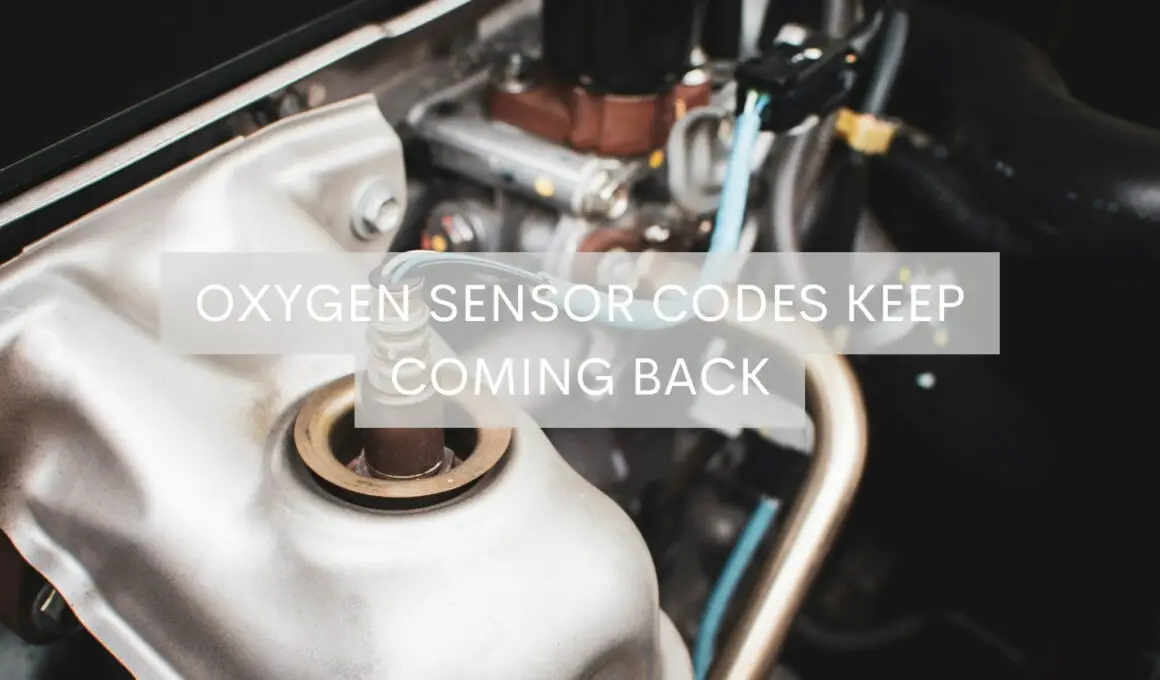In This Article Show
As an experienced mechanic and writer with over 15 years of hands-on experience in the automotive industry, I’ve seen almost every vehicle malfunction. One of the most prevalent issues I’ve encountered is with the humble yet crucial oxygen sensor.
Despite its unassuming size and simple appearance, the oxygen sensor, like other sensors e.g. the crankshaft position sensor plays an instrumental role in keeping your vehicle running smoothly and efficiently.
The oxygen sensor is vital to your vehicle’s emission control system. It measures the oxygen level in your car’s exhaust gases and relays this information to the car’s computer, allowing it to adjust the air-fuel mixture for optimal combustion.
When this sensor malfunctions, it triggers an error code in your car’s computer system.
Reading and understanding these error codes is key to identifying the root cause of any vehicle issue. But what happens when you resolve an error code only for it to reappear? It can be incredibly frustrating when oxygen sensor codes keep coming back, signaling that there’s still an unresolved issue.
Understanding Oxygen Sensor Codes
Understanding the language of your car’s computer is the first step in diagnosing issues related to oxygen sensors. When your oxygen sensor malfunctions or detects a problem, it communicates this to your vehicle’s onboard diagnostic (OBD) system, which triggers specific error codes.
These codes typically start with a “P” followed by four numbers. For instance, you might encounter codes like P0130, P0131, P0132, P0133, P0134, P0171, and P0172, among others.
Here’s what some of these common oxygen sensor codes mean:
- P0130: This indicates a malfunction with the oxygen sensor circuit in bank 1, sensor 1. “Bank 1” refers to the side of the engine that has the #1 cylinder, and “sensor 1” refers to the sensor closer to the engine.
- P0131: This code suggests that the oxygen sensor in bank 1, sensor 1, is producing a lower voltage than normal, indicating a lean condition (too much oxygen and not enough fuel).
- P0132: Contrary to P0131, this code means the oxygen sensor in bank 1, sensor 1, is producing a higher voltage than normal, indicating a rich condition (too much fuel and not enough oxygen).
- P0133: This code signals that the oxygen sensor in bank 1, sensor 1, is not switching or varying voltage quickly enough. This slow response could indicate a sluggish or failing sensor.
- P0134: This code means that there’s no activity detected in the oxygen sensor in bank 1, sensor 1. It usually signals a faulty sensor or wiring issues.
- P0171 and P0172: These codes represent system too lean (P0171) and system too rich (P0172), meaning the air-fuel mixture is off. These codes can be caused by a variety of issues, including problems with the oxygen sensor itself.
These are just a handful of the oxygen sensor codes that can appear. Each code provides specific insight into what’s going wrong, aiding in the process of troubleshooting.

Causes of Recurring Oxygen Sensor Error Codes
There are several possible causes for oxygen sensor codes to keep recurring. Here are the most common culprits:
1. Bad or Failing Oxygen Sensor
This is usually the most straightforward cause. The sensor itself could be faulty or nearing the end of its life. Over time, contaminants from oil, fuel, and coolant can coat the sensor, reducing its ability to read the oxygen levels accurately.
2. Issues with the Vehicle’s Fuel System
If your car’s fuel injectors are dirty or clogged, it can cause an improper air-fuel mixture, triggering oxygen sensor codes. Likewise, a malfunctioning fuel pressure regulator can also cause these codes to appear.
3. Faulty or Failing Catalytic Converter
The catalytic converter’s job is to reduce harmful emissions from your vehicle’s exhaust. If it’s failing, it can cause an increase in carbon buildup and trigger oxygen sensor codes.
4. Problems with the Mass Air Flow (MAF) sensor or Manifold Absolute Pressure (MAP) sensor
These sensors play a key role in determining how much fuel the engine needs. Providing incorrect data can throw off the air-fuel mixture, causing the oxygen sensor to trigger an error code.
5. Vacuum Leaks
A leak in the vacuum system can allow extra air into the engine, upsetting the air-fuel balance and triggering oxygen sensor codes.
6. Exhaust Leaks
An exhaust leak upstream of the oxygen sensor can draw in outside air, which the sensor interprets as a lean condition (too much oxygen), leading to an error code.
Remembering that a recurring oxygen sensor code doesn’t always mean the sensor itself is at fault. It could be a symptom of a larger issue elsewhere in your vehicle’s systems. Therefore, correctly diagnosing the root cause is crucial.

How to Fix Oxygen Sensor Error Codes
Once we’ve established the possible causes behind recurring oxygen sensor codes, we will address these issues. Here are the potential fixes based on the causes discussed above.
1. Replacing the Oxygen Sensor
If the sensor is faulty or failing, the most straightforward solution is to replace it. You can do this if you’re comfortable with basic car maintenance, but if not, any mechanic can handle it quickly.
2. Addressing Fuel System Issues
Cleaning your fuel injectors or replacing a faulty fuel filter can resolve many fuel system issues. If you suspect problems with the fuel pressure regulator, you may need a professional mechanic to diagnose and fix it.
3. Replacing or Repairing the Catalytic Converter
If your catalytic converter is failing, it may need to be replaced. This is a more complex task and usually requires a professional mechanic.
4. Cleaning or Replacing the MAF sensor or MAP sensor
If either of these sensors provides incorrect data, they may need to be cleaned or replaced. Depending on your car and its setup, this may be a job for a professional.
5. Fixing Vacuum or Exhaust Leaks
Vacuum leaks can often be found and fixed with some careful inspection and a little know-how. Exhaust leaks, especially those close to the oxygen sensor, will likely require a professional to repair.
Preventing Recurring Oxygen Sensor Error Codes
Prevention is better than cure, as the saying goes. With my 15 years of experience in the automotive industry, I’ve found that maintaining your car regularly can help prevent issues, including recurring oxygen sensor codes. Here are some preventive measures to consider:
1. Regular Maintenance and Check-ups
Regularly scheduled maintenance allows a professional to catch and fix minor issues before they become major problems. It also ensures your vehicle is in the best possible condition, reducing the risk of oxygen sensor issues.
2. High-Quality Fuel Use
Using high-quality, clean fuel helps prevent buildup and contamination that can interfere with the oxygen sensor’s functionality.
3. Regular Oil Changes
Keeping up with your vehicle’s recommended oil change schedule can prevent contaminants from entering your exhaust system and coating the oxygen sensor.
4. Promptly Addressing Error Codes
If an error code pops up, don’t ignore it. The sooner you address the problem, the less likely it is to trigger more issues, including recurrent oxygen sensor codes.
Wrapping it up
Understanding your vehicle’s oxygen sensor and the potential reasons behind recurring error codes is crucial for maintaining your car’s optimal performance and preventing more serious issues down the line.
Although often perplexing, these codes are your vehicle’s way of communicating with you, signaling when something is off.
I assure you that addressing these issues promptly and regularly maintaining your vehicle can significantly reduce the risk of recurring oxygen sensor codes. However, if you are overwhelmed by persistent oxygen sensor codes, don’t hesitate to consult your mechanic.










